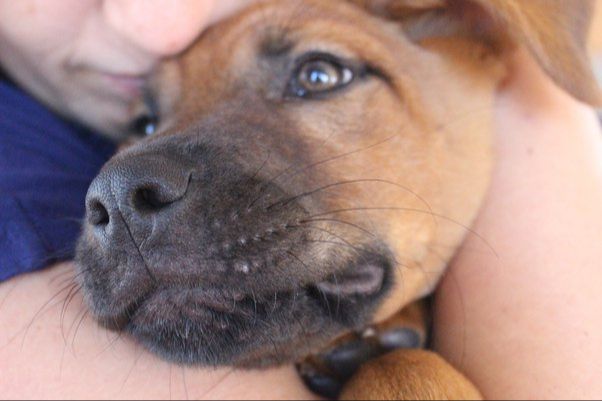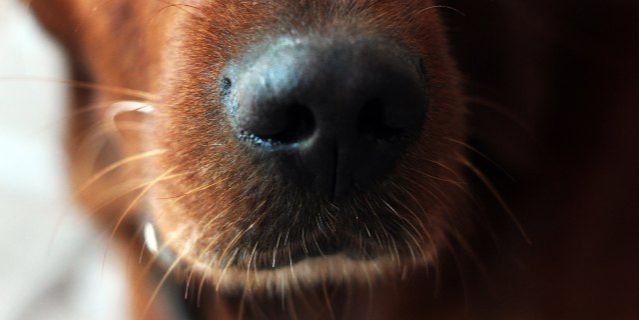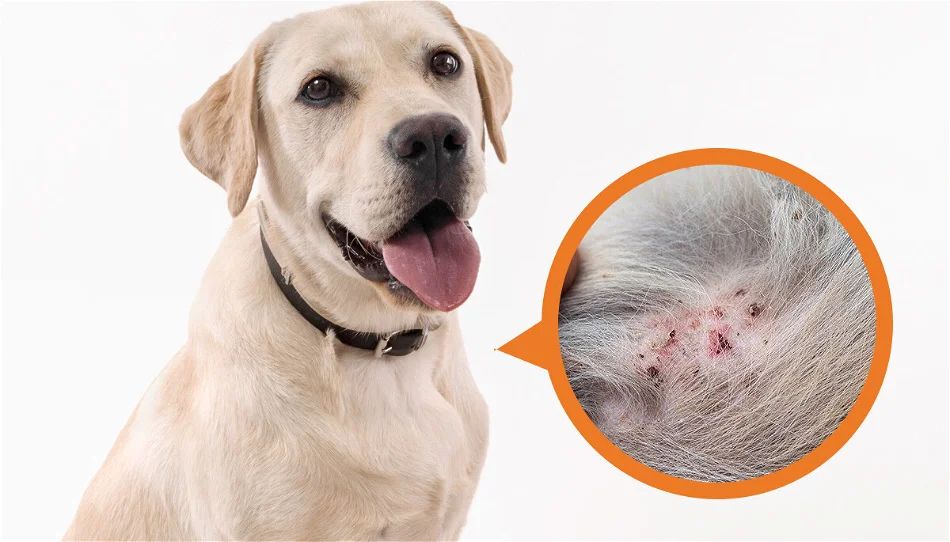What Happens When You Pull Out a Dog’s Whisker
Whiskers are important sensory organs for dogs. According to the VCA Animal Hospitals, “Whiskers are more sensitive than regular hairs because the follicles from which they originate are packed with blood vessels and nerves. In fact, a dog’s whiskers are so sensitive that they are capable of detecting subtle shifts in the air around them” (source).
Pulling whiskers out can be quite painful and disorienting for dogs because of how sensitive they are. Though the whiskers themselves don’t contain nerves, the follicles they are attached to are very sensitive. So yanking them out can cause discomfort and confusion.
There may be a small amount of bleeding when you pull out a whisker since there are blood vessels in the follicle. But the whisker itself does not contain nerves and cannot feel pain. The pain comes from damaging the follicle it was attached to.
Why You Should Avoid Pulling Out Whiskers
Whiskers serve an important sensory purpose for dogs, helping them navigate spaces and sense their surroundings. According to the AKC, “vibrissae really are sophisticated devices that help the dog feel its way through the world.” https://www.akc.org/expert-advice/family-dog/why-do-dogs-have-whiskers/ Losing whiskers impairs a dog’s spatial awareness and balance, making it more difficult for them to move around.
Unlike hair, whiskers do not shed and regrow as quickly. According to VCA Hospitals, “whiskers may take weeks and sometimes months to grow back.” https://vcahospitals.com/know-your-pet/why-do-dogs-have-whiskers So the damage from pulling them out can be long-lasting. It’s best to avoid pulling your dog’s whiskers out altogether, as it can negatively impact their ability to navigate and sense their surroundings for an extended period of time.
What to Do If You Accidentally Pull One Out
If you accidentally pull out one of your dog’s whiskers, the first thing to do is stay calm. Getting anxious or upset will only stress your dog out more. Gently inspect the area to see if there is any bleeding. If so, clean the area gently with a warm washcloth. Be very delicate, as the sensitive follicle will likely be sore.
Even if there is no blood, be extra loving and gentle with your dog for a little while. Losing a whisker can be painful and distressing for a dog, so provide some extra cuddles and affection to help them feel comfortable again. Speak in a soothing tone and consider giving them an special treat.

Monitor your dog in the hours and days after to see if there are any behavioral changes. They may seem more cautious or timid, especially around the area where the whisker was pulled out. This is normal as they adjust to the loss of sensation from that whisker. The sensitivity will return to normal as the whisker grows back.
While it can be alarming to accidentally pull out a whisker, try not to worry too much. Whiskers do grow back over time. Just focus on comforting your dog and being more careful in the future when petting or brushing around the muzzle. With some extra love and patience, your dog will bounce back to normal soon.
Help Your Dog Adjust
Losing a whisker can temporarily affect your dog’s spatial awareness and depth perception. Pay close attention over the next few days in case your dog seems more clumsy or disoriented, especially around furniture, stairs, or in tight spaces. According to Quora, you can help your dog adjust by avoiding rearranging furniture or navigating tricky terrain until the whisker grows back (https://www.quora.com/I-cut-my-dogs-whiskers-off-and-shes-really-upset-I-didnt-know-not-to-cut-them-off-How-do-I-comfort-her-until-they-grow-back).
Focus on rebuilding your dog’s confidence by hand feeding treats or meals. The extra care and patience will help your dog trust you again while their whisker grows back. According to Leesville Animal Hospital, being patient and using positive reinforcement will help get your relationship back on track (https://www.leesvilleanimalhospital.com/blog/2016/october/help-my-dog-s-whisker-fell-out-/).
How Long It Takes Whiskers to Grow Back
Whiskers take time to regrow after being pulled out or trimmed. The exact time frame depends on several factors:
Breed – Some breeds like Poodles tend to regrow whiskers faster than others.
Age – Puppies and younger dogs will regrow whiskers quicker than older dogs.
Individual Dog – Each dog’s regrowth timeline can vary slightly.
On average, it takes between 6 weeks to 3 months for whiskers to fully regrow after being pulled out or trimmed. However, it could take older dogs longer, upwards of 5-6 months to regrow the whiskers to their original length and thickness. This is because whisker regrowth slows as dogs age.

During the regrowth period, you may notice short whisker stubs on your dog’s muzzle as the whiskers start coming back in. Over time, they will elongate and thicken. Be patient, as the regrowth happens gradually. Within a few months, your dog should once again have its full set of sensitive whiskers.
Preventing Accidental Whisker Pulling
Accidentally pulling out a dog’s whiskers can be easily avoided by handling the dog gently, especially around the muzzle area. Be careful when petting, brushing, or trimming hair around the muzzle to avoid tugging or catching whiskers. Additionally, train dogs not to aggressively rub their faces on clothing, furniture, or carpeting, which can cause whiskers to snag and pull out. According to Purina, “You should also never pluck a dog’s whiskers as they have a lot of nerve endings at the base, which are very sensitive” (Source). Trimming whiskers should only be done if medically necessary, such as for a veterinarian-prescribed surgery around the muzzle area.
When Whisker Trimming May Be Needed
In most cases, trimming or cutting a dog’s whiskers is unnecessary and should be avoided. However, there are some situations where whisker trimming by a veterinarian or groomer may be recommended:
Severe matting that pulls on whiskers: Matting and tangles that pull tightly on the whiskers can be painful for dogs. Removing the excess fur may require trimming the whiskers so they don’t get pulled out. This should be done carefully by an experienced groomer.
Injury or infection of the whisker follicle: If a whisker follicle becomes injured or infected, the whisker may need to be trimmed to prevent further irritation while it heals. This should be evaluated by a veterinarian.
Whiskers growing into eyes: Some dogs have very long whiskers that can scratch the eye or grow inward. Gently trimming the whiskers may help prevent eye injuries. However, take care not to trim whiskers too short.
In all cases, only trim the minimum needed for the dog’s health and comfort. Avoiding the follicle will allow whiskers to regrow normally. Consult your vet if you have concerns about trimming your dog’s whiskers.
Proper Technique for Trimming
If trimming your dog’s whiskers is absolutely necessary, such as for medical treatment, it’s important to use proper technique to avoid discomfort. Here are some tips:
– Use sterile, sharp scissors or clippers. Dull tools will tug on the follicle, causing pain. Sharp implements make a clean cut.[1]
– Only trim the length needed for treatment. Don’t cut more than necessary.
– Never cut all the way down to the follicle. Leave at least half the length of the whisker intact to avoid irritating the sensitive follicle.[2]

Following these guidelines can help minimize discomfort if whisker trimming is unavoidable. But remember, whiskers play an important role, so trimming should be a last resort.
Signs of Whisker Regrowth
If your dog loses its whiskers whether accidentally pulled out or trimmed, there are some signs to look for that indicate the whiskers are starting to grow back in:
The follicle where the whisker was will become darkened and thickened as the new hair starts to emerge. According to the article “Will My Dog’s Whiskers Grow Back? Tips on Promoting Regrowth” on PawSafe, this is one of the first visible signs of regrowth.
Next, you may notice fine, short hairs growing from the follicle. The regrowing whisker will start out very thin and short.
Over time, the new whisker will gradually return to its normal thickness and length. Full regrowth can take weeks to months. Be patient, and avoid trimming or pulling any re-growing whiskers so they can fully mature. Check the article “Do Dog Whiskers Grow Back? What You Need to Know!” on Hepper for more details on the regrowth timeline.
Once the new whiskers have gone through their complete growth cycle, your dog’s whisker pattern should return to normal.
When to See the Vet
In most cases, a dog losing a whisker or getting one plucked out accidentally is harmless. The whisker will grow back on its own within weeks. However, in some cases, you may need to take your dog to the vet after a whisker is pulled out:
Persistent bleeding from follicle – If the whisker follicle continues to bleed for more than a day after the hair was pulled out, take your dog to the vet. Prolonged bleeding could be a sign of infection or damage deep in the follicle that needs medical treatment.
Skin infection around follicle – Look for signs of redness, swelling, pus, or tenderness around the empty whisker follicle. This could indicate a bacterial infection that requires antibiotics from your vet (source: https://www.leesvilleanimalhospital.com/blog/2016/october/help-my-dog-s-whisker-fell-out-/).

Ongoing behavioral changes – Some dogs may show signs of anxiety, distress, or unusual behavior after getting a whisker pulled out accidentally. If these behavioral changes persist more than a day or two, consult your vet to see if medication may help your dog adjust.